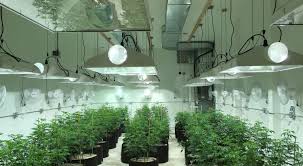
Understanding HVAC System Components for Grow Room Success
The ideal atmosphere for growth of plants in a grow space requires more than good lighting and nutrient management. A crucial element that is often ignored is that of the HVAC (Heating Ventilation, and HVAC) (Heating, Ventilation and Conditioning) system. A properly designed HVAC system will ensure that plants receive the right temperature, humidity, as well as air circulation for them to thrive. Here’s a comprehensive guide to understanding and setting up an HVAC system to your grow room hvac.
Temperature Control
The regulation of temperature is crucial to the health of your plants. Most plants require a consistent temperature range to grow optimally. A typical grow room must be kept between 65 and 80 degrees (18degC to 27degC) in the daytime and less so in the evening. HVAC systems with cooling and heating capabilities can aid in maintaining these temperatures and prevent extreme temperatures that can cause stress to plants or hinder growth.
Humidity Management
The levels of humidity directly impact the health of plants and affect everything from nutrient uptake to the likelihood of developing mold and mildew. The ideal humidity ranges between 40% and 60%, and varies based on the species of plant and the stage of growth. HVAC systems often include dehumidifiers or humidifiers as part of the setup to manage these levels effectively. A proper ventilation system also aids in controlling humidity by allowing moist air to go out while fresh air can enter.
Air Circulation
Air circulation is essential to avoid hot spots and makes sure that the plants get enough CO2. A balanced HVAC system includes the use of ductwork and fans to distribute all air equally across the growth space. Oscillating fans and inline duct fans are commonly used to enhance air movement and stop stagnant conditions. This circulation is crucial to avoid issues such as leaf burn or illness.
Choosing the Right System
Choosing the right HVAC system depends on the size of your growing room as well as your specific requirements. For smaller spaces windows air conditioners or portable unit paired with a small heater as well as a dehumidifier could be sufficient. For larger grow rooms, you may need an upgraded system that includes central AC, high-capacity heater, and an integrated dehumidifier. Some systems are even equipped with CO2 controllers to provide greater precision.
Energy Efficiency
HVAC systems for growing rooms can be energy-intensive. Opting for energy-efficient units and including programmable thermostats will aid in reducing energy usage. Additionally, regular maintenance, including cleaning filters and ensuring the ductwork is sealed, keep the system running efficiently and prolongs its lifespan.
Conclusion
A well-functioning grow room hvac is essential for maintaining the optimal conditions in a greenhouse. By controlling humidity, temperature, and air circulation, you can ensure your plants are well and are productive. Make sure you choose the best equipment and maintaining it well to achieve the best results in your growing endeavors.